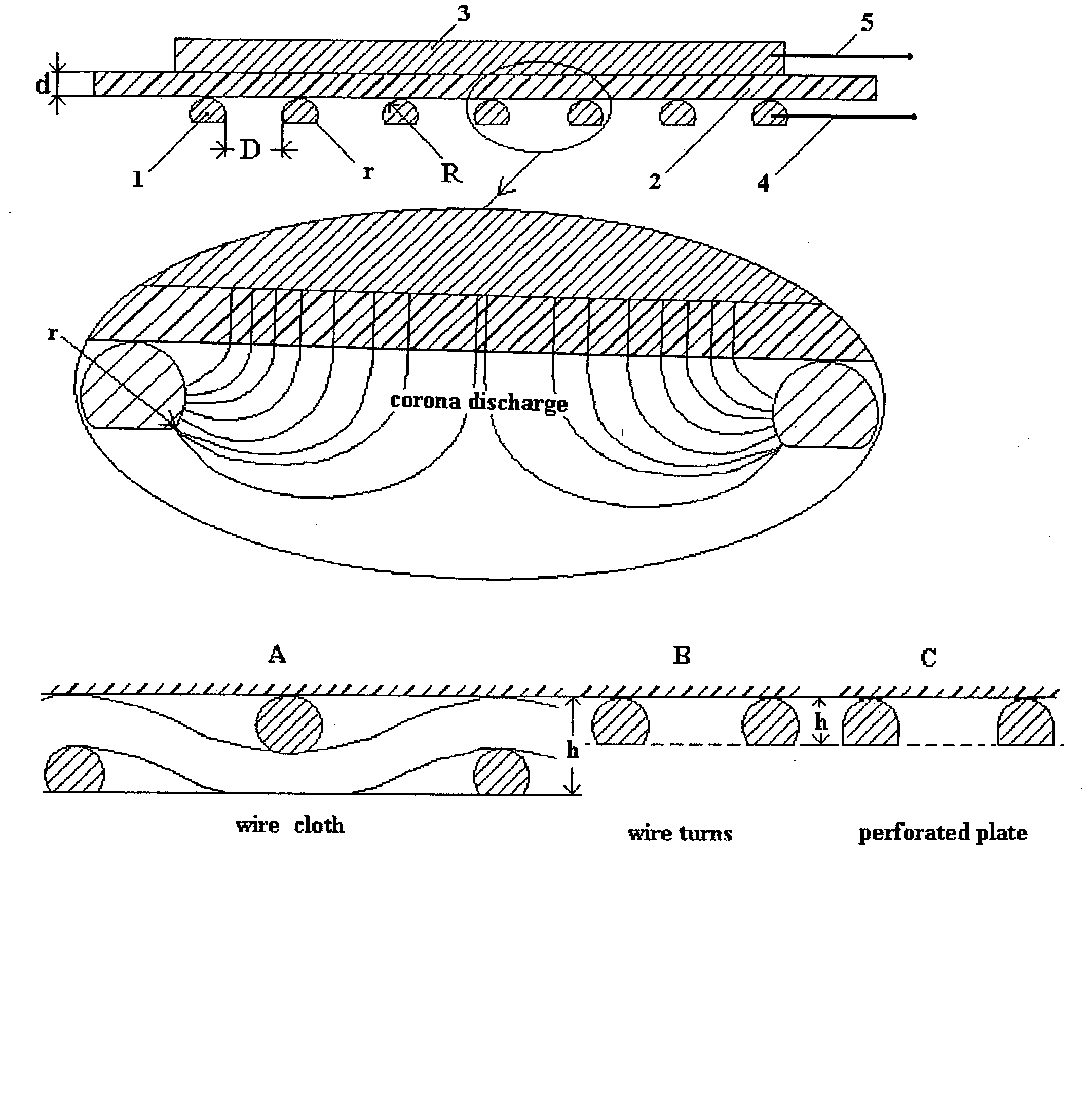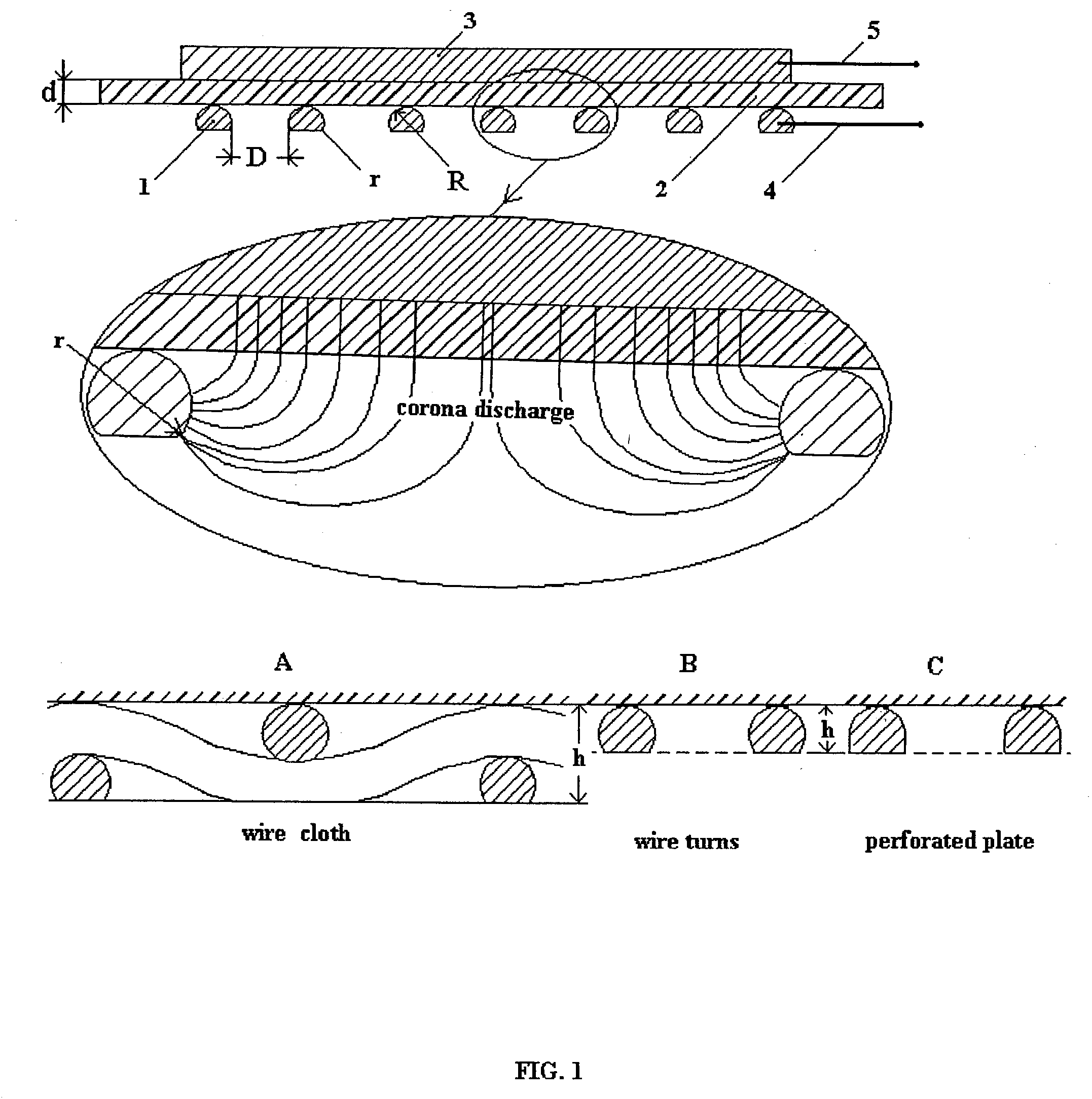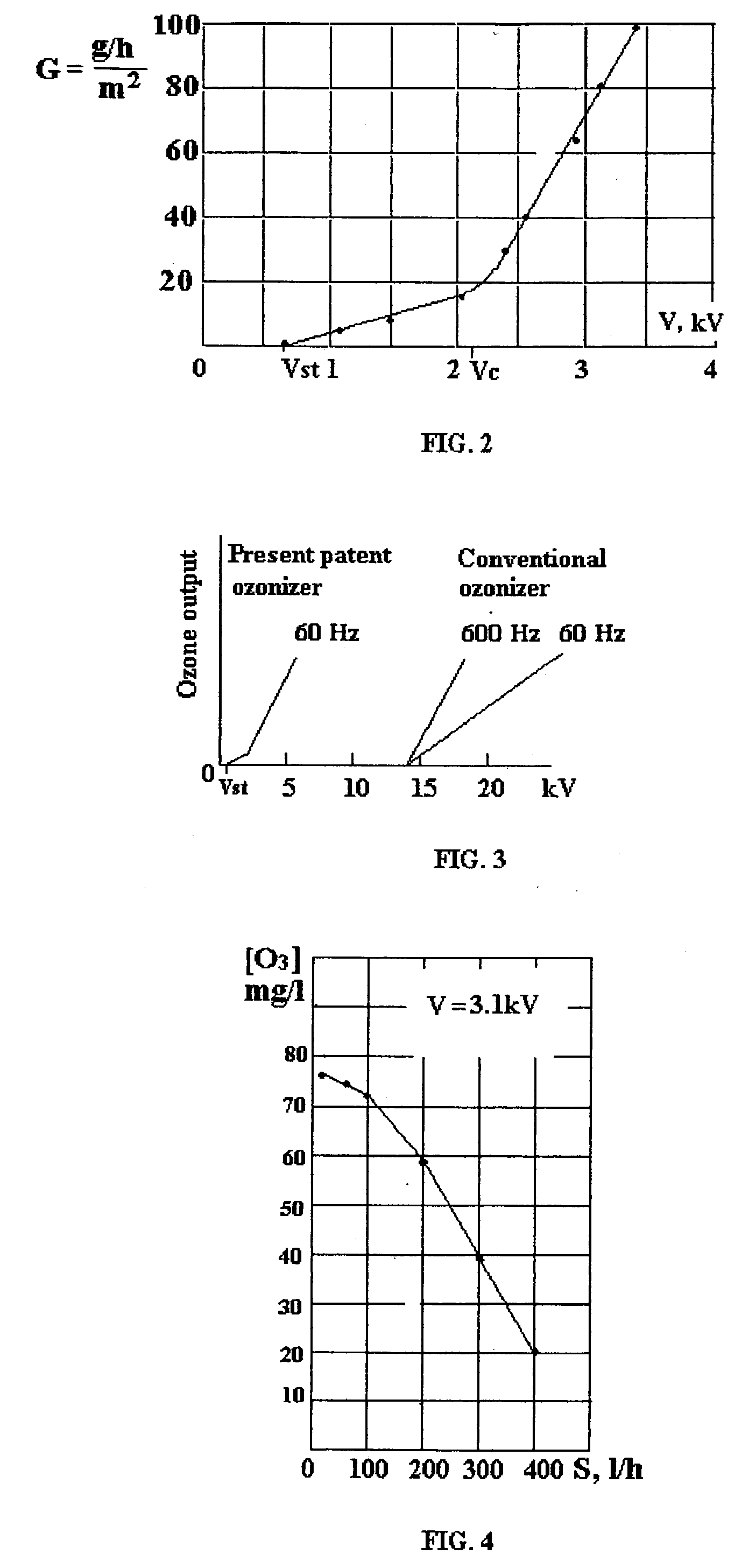Method for surface corona/ozone making, devices utilizing the same and methods for corona and ozone applications
- Summary
- Abstract
- Description
- Claims
- Application Information
AI Technical Summary
Problems solved by technology
Method used
Image
Examples
Embodiment Construction
[0103] FIG. 1 is a cross section view of the corona / ozone-generating element with the claimed sizes. The streamlines of the electrical field or corona current are shown. Corona discharge has a larger intensity where said streamlines have larger density. When the sine voltage rises, corona discharge disperses inside of holes D in the net electrode 1 on a dielectric spacer / film 2. Said dielectric is placed between said net electrode 1 and rigid base electrode 3. AC voltage is applied by connectors 4 and 5 to the net electrode 1 and to the base electrode 3 correspondingly. The high voltage capacitor technology is used for creating said ozone-generating element. According to this technology it is necessary to have a tight contact between said dielectric spacer / film 2 and the base electrode 3 and said dielectric spacer / film must have a higher capacity and high enough breakdown voltage at the same time. The corona discharge is located in series with said dielectric capacity and the capaci...
PUM
 Login to View More
Login to View More Abstract
Description
Claims
Application Information
 Login to View More
Login to View More - R&D
- Intellectual Property
- Life Sciences
- Materials
- Tech Scout
- Unparalleled Data Quality
- Higher Quality Content
- 60% Fewer Hallucinations
Browse by: Latest US Patents, China's latest patents, Technical Efficacy Thesaurus, Application Domain, Technology Topic, Popular Technical Reports.
© 2025 PatSnap. All rights reserved.Legal|Privacy policy|Modern Slavery Act Transparency Statement|Sitemap|About US| Contact US: help@patsnap.com



